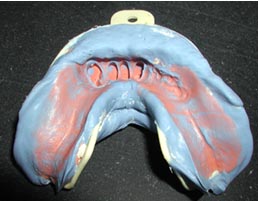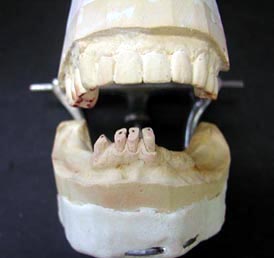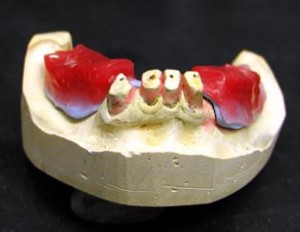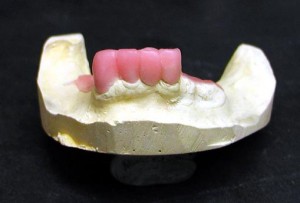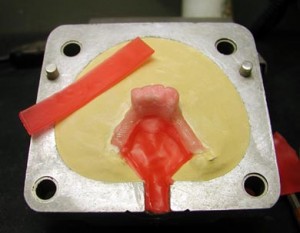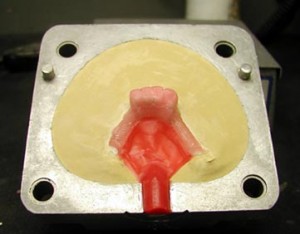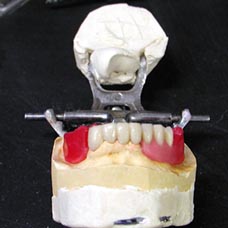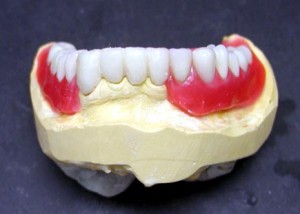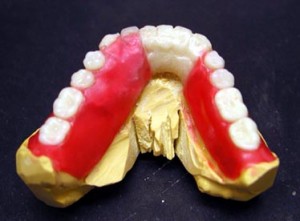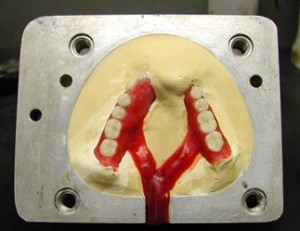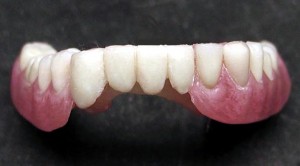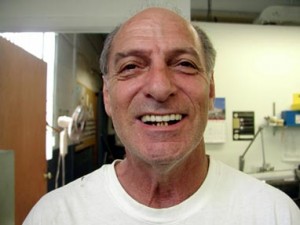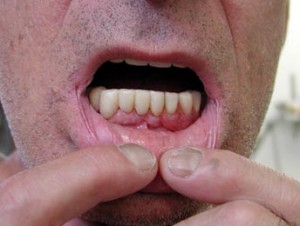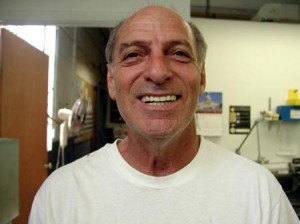
Our patient is a male in his late fifties. He has four remaining lower anterior teeth that have been sheered down by attrition. The Alveolar bone appears to be firm and the teeth are solid.
We Have Several Choices:
(1) Leave the teeth as is and make a simple lower partial. But how would you clasp the teeth?
(2) A couple of buccal arms? We could do a lower acrylic partial with silicone gaskets. But silicone is hard to keep clean and is known to pickup bacteria. The anterior teeth would still be unesthetic.
(3) We could propose individual posts and porcelain crowns. Do we splint the crowns and consider a stress-breaker type of attachment? Sounds plausible, but can the patient afford the costs and be willing to go through the process? The answer is no! So what is the next best prognosis? Here’s what we recommended to our friend Stewart.
We start with an excellent elastic impression from the dentist.
Models poured and articulated. Pins inserted in elastic impression for stabilization.
Note excessive abrasion on occlusals.
Anterior undercuts blocked out for duplication. Bite block made for bite registration.
Anterior waxup with posterior extensions transferred to duplicated model.
Note extensions on saddle connecting to anteriors.
Note flat sheet of wax to form sprue and concavity of wax in entry area.
Note 1/2 inch of wax which will be softened over Bunsen burner and put into entry area.
Note convexity shape of wax in entry hole.
By compressing other half of flask against the soft wax we create the convexity.
Anteriors are injected with Flexite MP or Acetal tooth shade plastic.
(Completed and Polished)
Lateral, cuspid and first bicuspid setup for initial tryin with wax rim.
Completed setup and waxup.
Lingual view of waxup prior to investing in flask.
View of flasked case and method of spruing.
One piece overdenture in pre-completed stage.
Patient before inserting partial.
Patient with lower lip extended.
Happy patient!
Summary
We have created an overdenture which gives the appearance of a separate lower anterior bridge and a separate lower partial. This is made possible with our Flexite thermoplastics which have compatible tooth color and tissue shaded plastics. During the injection process there is complete fusion between the tooth color and the pink color. Anterior shades can be modified by adding our bonding agent and tooth color acrylics to the labial surface.
Advantages
Non invasive – No tooth grinding – No discomfort to the patient – Restores lower anterior esthetics – Moderate cost to the patient – Hygienic. (Easier access to maintain cleanliness)

